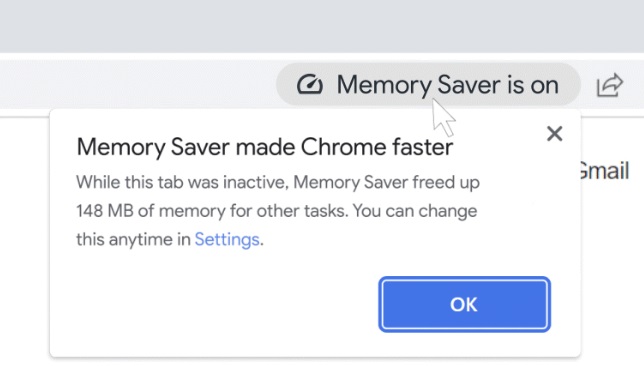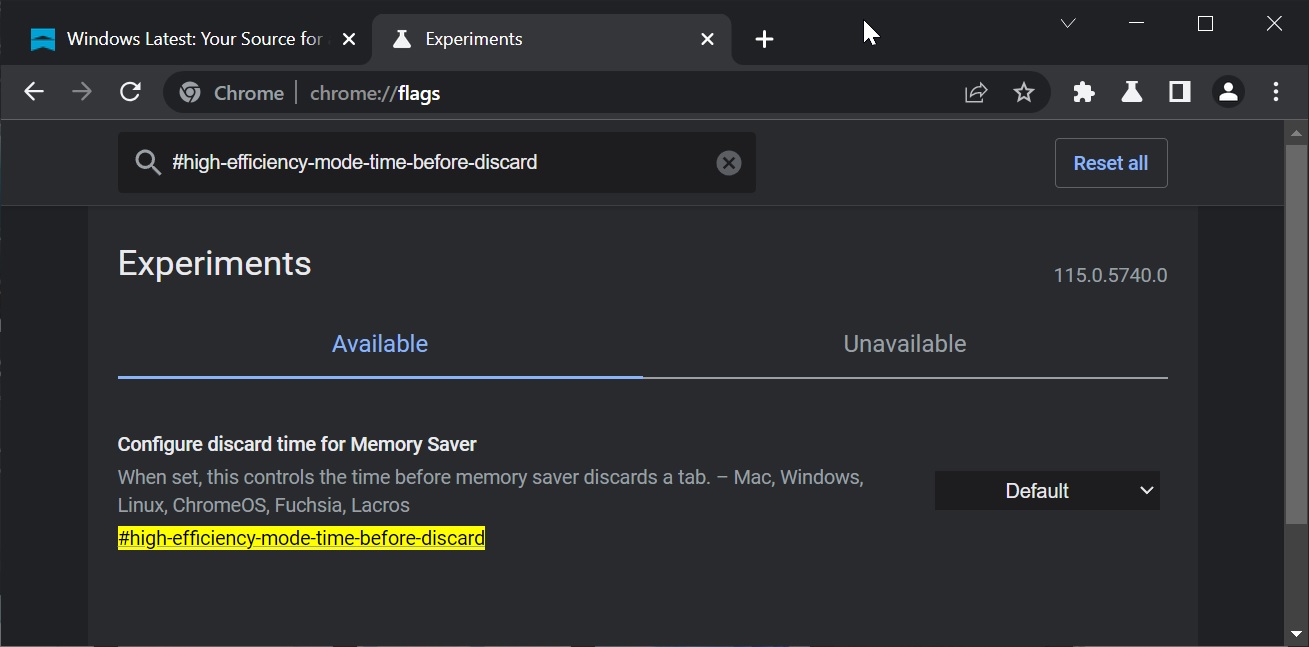Microsoft and Google are racing to add new performance-centric features to their browsers. While Microsoft Edge has sleeping tabs, added several months ago, Google Chrome recently gained support for a similar feature called “memory saver” to free memory storage on desktop platforms.
Google Chrome for Windows is set to upgrade its memory-saving capabilities with a new optional toggle called tab discard control”. The browser was recently updated with a Memory Saver feature that frees memory from inactive tabs.
In February, Google confirmed that it is committed to optimizing the performance of Chrome and introduced two new settings that can reduce memory usage by up to 40% and save up to 10GB of memory. Soon, you can control the time before a tab is discarded in Chrome.

By enabling the flag “Configure discard time for Memory Saver,” you can choose from a range of discard timings, including default, 1 minute, 5 minutes, 15 minutes, 30 minutes, 1 hour, 4 hours, 6 hours, and 12 hours. This will allow you to customize the browser’s performance according to your needs and preferences.

Chrome’s Memory Saver mode is similar to Microsoft Edge’s sleeping tabs in nature, and it is beneficial for users with multiple Chrome tabs that they intend to revisit later.
By freeing up memory from inactive tabs, Google hopes to ensure a smooth experience for websites being actively used in the browser. At the same time, it will allow you to run other apps, including resource-intensive apps.
It is worth noting that inactive tabs will be reloaded automatically when needed, and the upcoming timer toggle gives you greater control.
Chrome to copy Microsoft Edge’s dimming animation for inactive tabs
That’s not all, though. The search engine giant is also set to introduce a new dimming animation for inactive tabs, signalling users when a tab has been discarded. This feature will resemble Microsoft Edge’s sleeping tabs effect, providing a visual cue to users about the status of their open tabs.
For example, you’re working on a research project and have multiple tabs open, some for scrapping Wikipedia and others for collaborating with team members in Teams. The rest of the tabs will become inactive as you focus on one or two active tabs.
With Chrome’s new dimming animation feature, you’ll notice that inactive tabs start to dim, indicating that they have been discarded to save memory.
This visual cue helps you manage your open tabs more effectively as you switch between tabs.
In addition to these performance improvements, Google Chrome could also gain support for Windows 11’s Mica material, which makes the app title bar look more attractive.
The post Google Chrome for Windows upgrades memory-saving with tab discard control appeared first on Windows Latest

Leave a Comment
No comments yet. Be the first to comment!